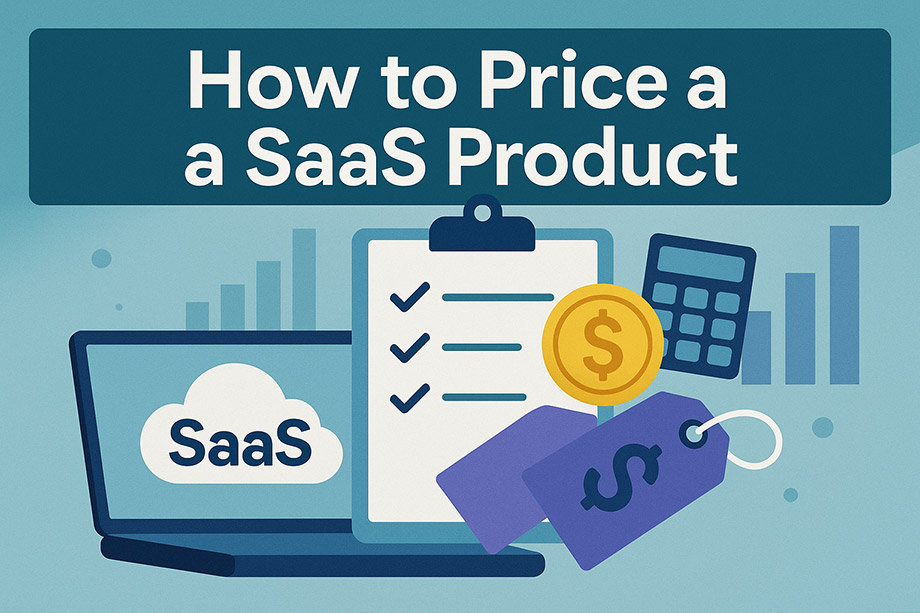How to Price a SaaS Product – A Practical Guide for Founders and Product Teams

Pricing a SaaS (Software as a Service) product isn’t just about picking a number out of thin air. It’s a strategic decision that affects your product’s success, customer satisfaction, and long-term profitability. Unlike traditional software where customers pay once, SaaS products usually operate on a recurring subscription model. This adds complexity, and opportunity to pricing.
If you get your pricing right early on, it can become a powerful competitive advantage, helping you grow faster and retain customers longer. Here’s a straightforward guide to pricing your SaaS product that’s practical, actionable, and based on proven strategies.
Table of Contents
1. Start with Customer Value, Not Features or Costs
Your pricing should revolve around the value your product delivers to customers. What problems does it solve? How does it improve their daily work or life?
- Quantify value: For example, does your software save users hours of manual work, reduce costly errors, or generate more revenue for their business? If you can estimate this in dollars or time, you have a solid baseline.
- Qualify value: Beyond numbers, your product might reduce stress, improve team collaboration, or simplify workflows. These qualitative benefits matter to customers too.
- Talk to customers: Don’t guess. Interview your target users and ask what they’d pay for the benefits your product offers. Their feedback can help you set a realistic price that matches their expectations.
2. Choose a Pricing Model That Fits Your Product and Market
SaaS products offer a wide range of pricing models, choose one that aligns with how your customers use your product and perceive value.
- Per user/seat: Common for collaboration tools where each additional user adds value.
- Tiered pricing: Different packages with varying features, ideal if you want to cater to different customer segments.
- Usage-based: Charge customers based on how much they use your service, e.g., storage space or API calls.
- Flat rate: A single price for all features, simple and transparent.
- Value-based: Price according to the actual value customers get, which can be the most profitable but requires deep understanding.
Experimenting early with models can reveal what resonates best with your audience. For example, a property management SaaS might charge per rental unit instead of per user because it aligns with the customer’s business scale.
3. Analyze Your Competition, but Don’t Just Copy
Knowing what competitors charge is important, but it’s only one piece of the puzzle.
- Identify what makes your product unique or better. Can you justify charging more because your solution is simpler, faster, or has better support?
- Consider whether pricing slightly below competitors will help you enter the market or if positioning as a premium option makes more sense.
- Don’t be afraid to innovate your pricing approach. SaaS flexibility means you’re not limited to legacy models and can stand out with creative pricing.
4. Understand Your Costs and Desired Profit Margins
While customers don’t think about your costs, you must.
- Calculate all costs: software development, hosting, customer support, marketing, and sales.
- Determine your target profit margin. This ensures your pricing sustains your business and funds growth.
- Make sure your pricing covers your costs plus profit. Pricing too low can hurt your business, while pricing too high might reduce sales.
5. Keep It Simple
Pricing complexity often confuses customers and slows decision-making.
- Avoid overly complicated tier structures or too many packages.
- Many companies succeed with three simple tiers: basic, standard, and premium. Studies show most customers gravitate toward the middle option.
- Simplicity also reduces operational headaches and makes it easier to communicate your value clearly.
6. Factor in Customer Lifetime Value (LTV)
In SaaS, customers pay over time, so focus on the lifetime value of a customer.
- Calculate LTV roughly: (Average monthly revenue per customer – Monthly costs) × Average subscription length in months.
- Make sure your customer acquisition cost (CAC) is significantly lower than your LTV. A healthy SaaS business often sees LTV at least 3 to 5 times higher than CAC.
- High LTV lets you invest more in sales and marketing to grow faster.
7. Test and Iterate Your Pricing Early and Often
Pricing isn’t a one-and-done decision.
- Run customer interviews and surveys to gauge willingness to pay.
- Use A/B tests to experiment with different prices or packaging on your website.
- Monitor customer churn and feedback to adjust pricing as you add features or enter new markets.
- Pricing is a living part of your product strategy—don’t be afraid to pivot.
8. Additional Tips to Boost Your SaaS Pricing Strategy
- Free trials or freemium: Let users experience your product risk-free to increase conversions.
- Upsell and cross-sell: Build upgrade paths into your pricing that add value and revenue over time.
- Be transparent: Clear pricing builds trust and reduces buyer hesitation.
- Consider discounts carefully: Annual prepayment discounts encourage longer commitments but may leave money on the table.
- Customer service matters: Great support reduces churn and justifies your pricing.
Final Thoughts
Pricing your SaaS product is as much an art as it is a science. Focus on delivering clear, tangible value and choosing a pricing model that matches your customer’s needs. Keep pricing simple, measure the impact on your business metrics, and don’t hesitate to adjust as you learn.
Get pricing right early, and you’ll create a steady revenue stream that fuels growth, innovation, and happy customers.

